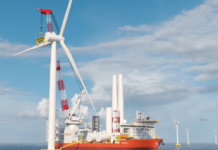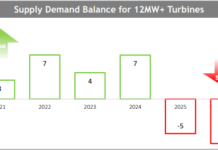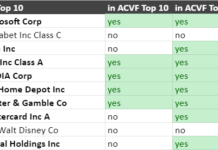Three weeks ago, I wrote on the year ahead for the US wind sector and said I would analyze the two new wind ETFs now available to US investors: the First Trust ISE Global Wind Energy Index Fund (FAN) and the PowerShares Global Wind Energy Portfolio (PWND). While I don’t currently have a position in either ETF as I expect headwinds in the US (no pun intended) to place downward pressure on some of the global wind stocks in the next few months (the US accounted for 27% of global installed capacity in ’07), I still intend to get in post-November elections when things get brighter on the policy side. While these two ETFs cover the same sector, they offer two distinct options for investors and are therefore worth exploring in more detail. 
Basic Valuation Metrics 
The table above features a few basic valuation metrics. The expense ratio is what it costs you to invest in the funds, and many active investors shun mutual funds on grounds that high expense ratios eat away at returns. One of the benefits of ETFs is that they offer expense ratios that are lower than those of mutual funds, and this holds true for alternative energy. In this case, the 0.15% difference between the two really isn’t material and probably wouldn’t weigh very heavily in my decision. The PE and Price-to-book-value are where things get more interesting from my perspective. Based on these metrics – especially PE – PWND has a higher weighting in stocks that are considered pricey than does FAN. A PE of above 76 is considered very high (the long-term average for the S&P 500 is around 15, and it peaked at around 35 in the late 90s), although it’s not unusual in the alternative energy industry. This data is a bit dated so this likely is lower now, albeit it probably remains above the long-term average for the market. Depending on what your position is on growth stocks, this may or may not matter much. If you have a value leaning and believe low-PE stocks outperform in the long run, then this may be a red flag. With regards to the share price premium over net asset value at yesterday’s close, this isn’t an especially useful metric on its own, and would probably be more useful if examined as a trend over a longer period of time. Nevertheless, this is something worth keeping an eye on – an ETF trading at an important discount to its NAV could present an interesting buying opportunity, while the opposite could spell downside risk. Finally, PWND holds 32 securities, whereas FAN holds 67. This implies that PWND’s positions are on average larger than FAN’s – the average security in PWND makes up 3% of the portfolio, whereas that figure is 1.67% for FAN. Holdings 
FAN’s top ten holdings are somewhat more focused on the wind supply chain, whereas PWND has a more exposure to wind park operators. Again, as can be noted, PWND’s positions are appreciably more concentrated than FAN’s, with the top ten holdings making up about 65% of the portfolio Vs. 57% for FAN. Overall, I expect the supply chain to be less impacted by tightness in credit markets than park operators. The following two graphs are based on categories I created. While both ETFs disclose their industry exposures on their respective websites (here for PWND and here for FAN), I wanted to dig a bit deeper to know what those exposures really meant in terms of the wind power value chain. I didn’t know all of the companies so my superficial search might not have landed everything where it truly belongs, but by-and-large I believe this is a good approximation. 

My categories are fairly self-explanatory, save perhaps the distinction between “Park ownership” and “Power gen”. “Park ownership” refers to pure-play wind park and/or renewable power generation asset owners, whereas “Power gen” refers to larger electric utilities with exposure to a wide range of generation fuels. We can note that, by market value of holdings, both funds are mostly focused on turbine makers and wind park owners – no big surprise here. One of the big differences is undoubtedly the fact FAN has three times the exposure to the Power gen sector than PWND does – this probably accounts in part for the PE differences between the two funds. Another notable difference is the comparatively smaller exposure to Blades FAN has relative to PWND, although I don’t have an opinion one way or another on this. 
Finally, country exposure. You will notice that in neither case does the final count come up to 100 – that’s because in both cases only the top ten countries were provided. I’m not sure how much of a difference this makes, seeing as most of the top holdings are global businesses. This breakdown says nothing about the exposure of the underlying businesses to different geographical markets, which is arguably what matters most if you intent to hold the ETF for the medium or long term. Nevertheless, to some, this may be useful info in trying to time an entry point if you have an opinion on where each of these equity markets is headed. Conclusion These two ETFs offer distinct choices to investors, although the performance chart above tells a pretty similar story so far (and not a great one at that…). I view the recent downward pressure on the wind sector mostly positively because I like the space long-term and periodic hiccups provide good entry points. PWND, with its more concentrated positions and greater focus on pure plays, probably offers a more direct way to play the space. If global wind stocks take off, you will experience greater capital appreciation with this one. However, those rich PEs and concentrated positions might be a red flag for more conservative investors. FAN offers more diversification, and its larger exposure to the Power gen space might make it a tad less volatile. The top ten holdings have a greater concentration on the supply chain, which I believe will remain strong. I am leaning towards FAN. I already have exposure to speculative wind in my portfolio, and would look to buying an ETF as a means of reducing my risks on a portfolio basis. I will provide an update on this after (and if!) I end up pulling the trigger. DISCLOSURE: The author does have not a position in any of the securities discussed in this article DISCLAIMER: I am not a registered investment advisor. The information and trades that I provide here are for informational purposes only and are not a solicitation to buy or sell any of these securities. Investing involves substantial risk and you should evaluate your own risk levels before you make any investment. Past results are not an indication of future performance. Please take the time to read the full disclaimer here.







